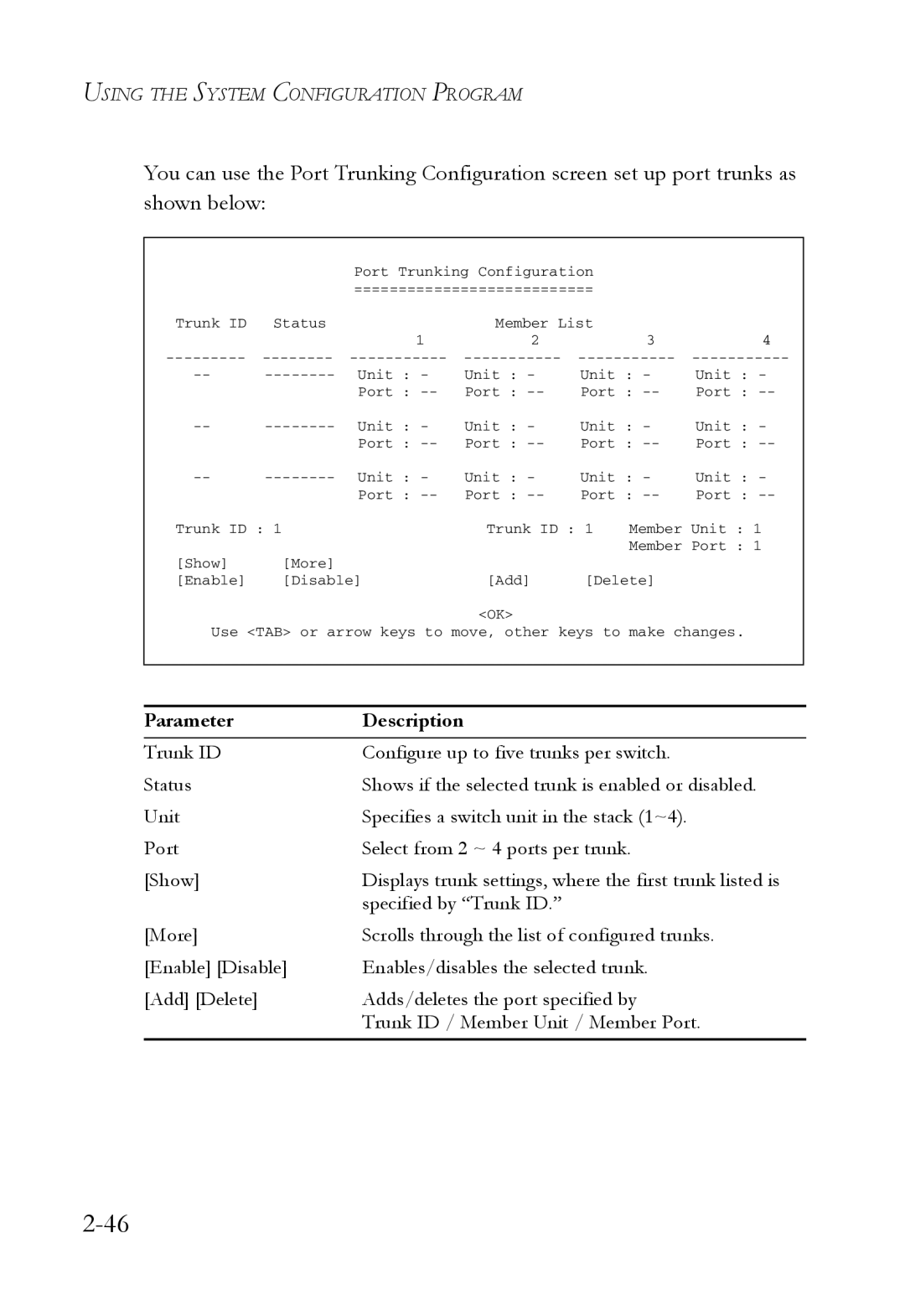
USING THE SYSTEM CONFIGURATION PROGRAM
You can use the Port Trunking Configuration screen set up port trunks as shown below:
Port Trunking Configuration
===========================
Trunk ID | Status |
| Member List |
|
| |
|
| 1 | 2 |
| 3 | 4 |
Unit : - | Unit : - | Unit : - | Unit : - | |||
|
| Port : | Port : | Port : | Port : | |
Unit : - | Unit : - | Unit : - | Unit : - | |||
|
| Port : | Port : | Port : | Port : | |
Unit : - | Unit : - | Unit : - | Unit : - | |||
|
| Port : | Port : | Port : | Port : | |
Trunk ID : 1 |
| Trunk ID : 1 | Member Unit : 1 | |||
|
|
|
|
| Member Port : 1 | |
[Show] | [More] |
|
|
|
|
|
[Enable] | [Disable] | [Add] | [Delete] |
| ||
|
|
| <OK> |
|
|
|
Use <TAB> or arrow keys to move, other keys to make changes. | ||||||
Parameter | Description |
Trunk ID | Configure up to five trunks per switch. |
Status | Shows if the selected trunk is enabled or disabled. |
Unit | Specifies a switch unit in the stack (1~4). |
Port | Select from 2 ~ 4 ports per trunk. |
[Show] | Displays trunk settings, where the first trunk listed is |
| specified by “Trunk ID.” |
[More] | Scrolls through the list of configured trunks. |
[Enable] [Disable] | Enables/disables the selected trunk. |
[Add] [Delete] | Adds/deletes the port specified by |
| Trunk ID / Member Unit / Member Port. |
